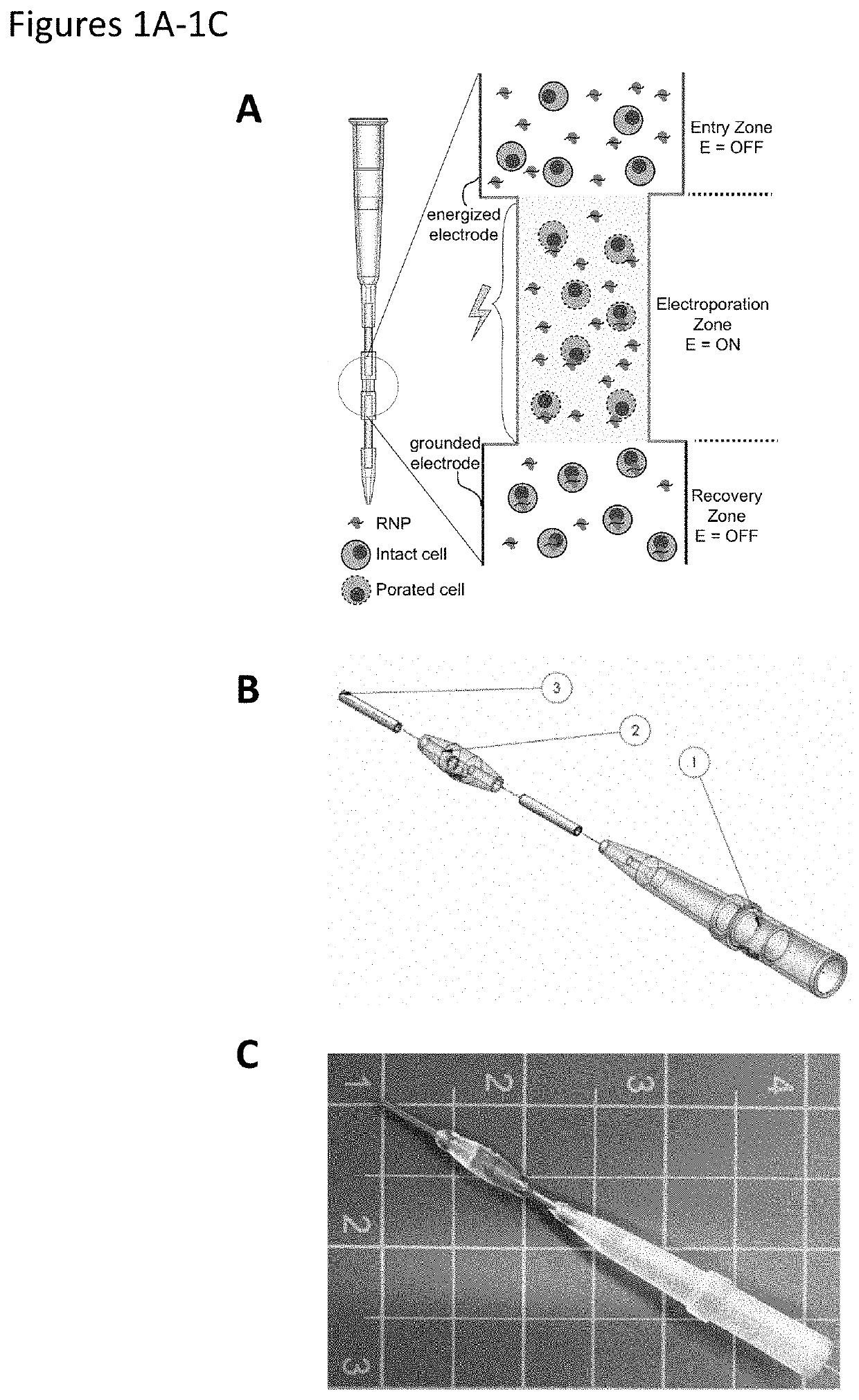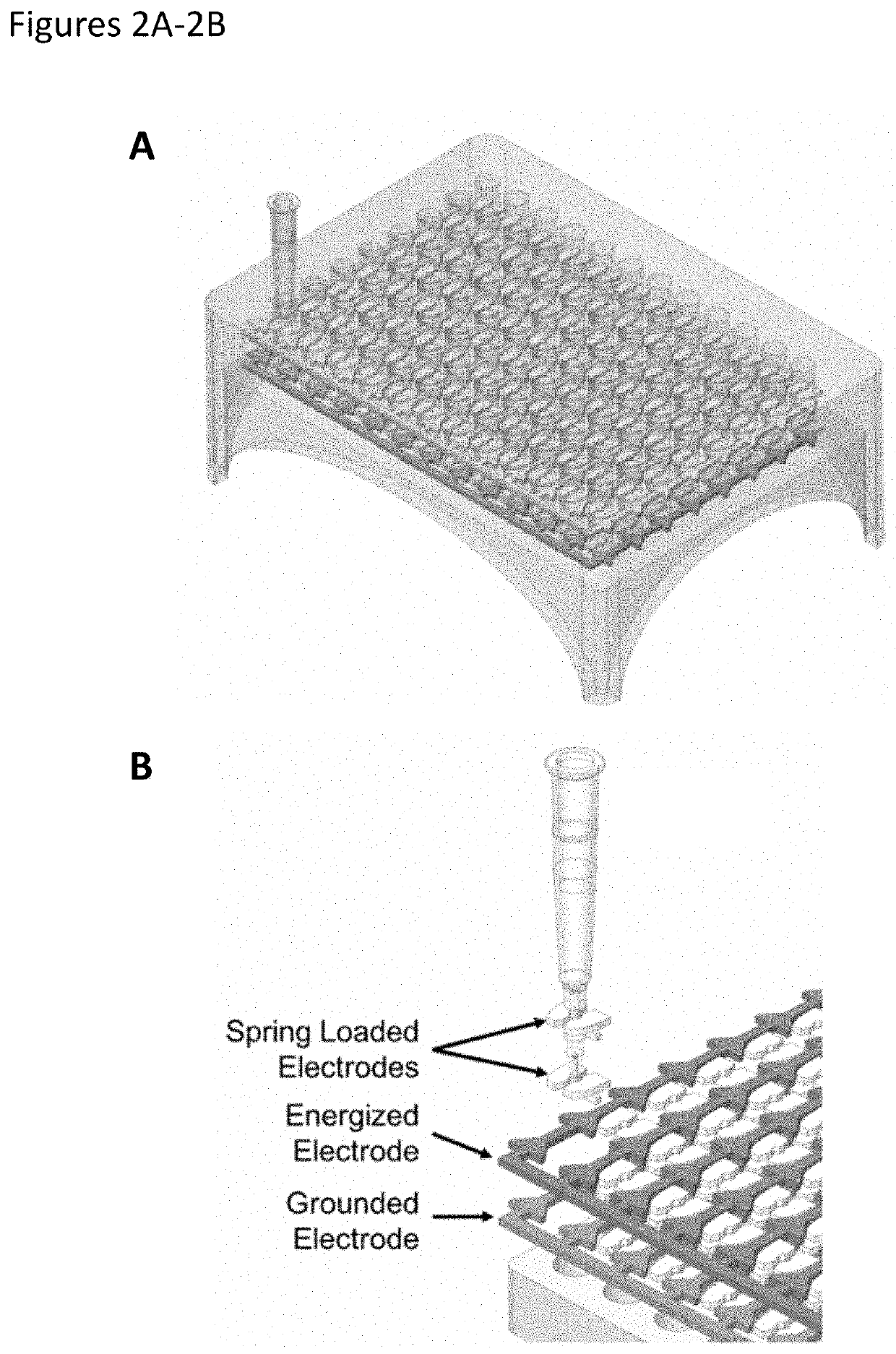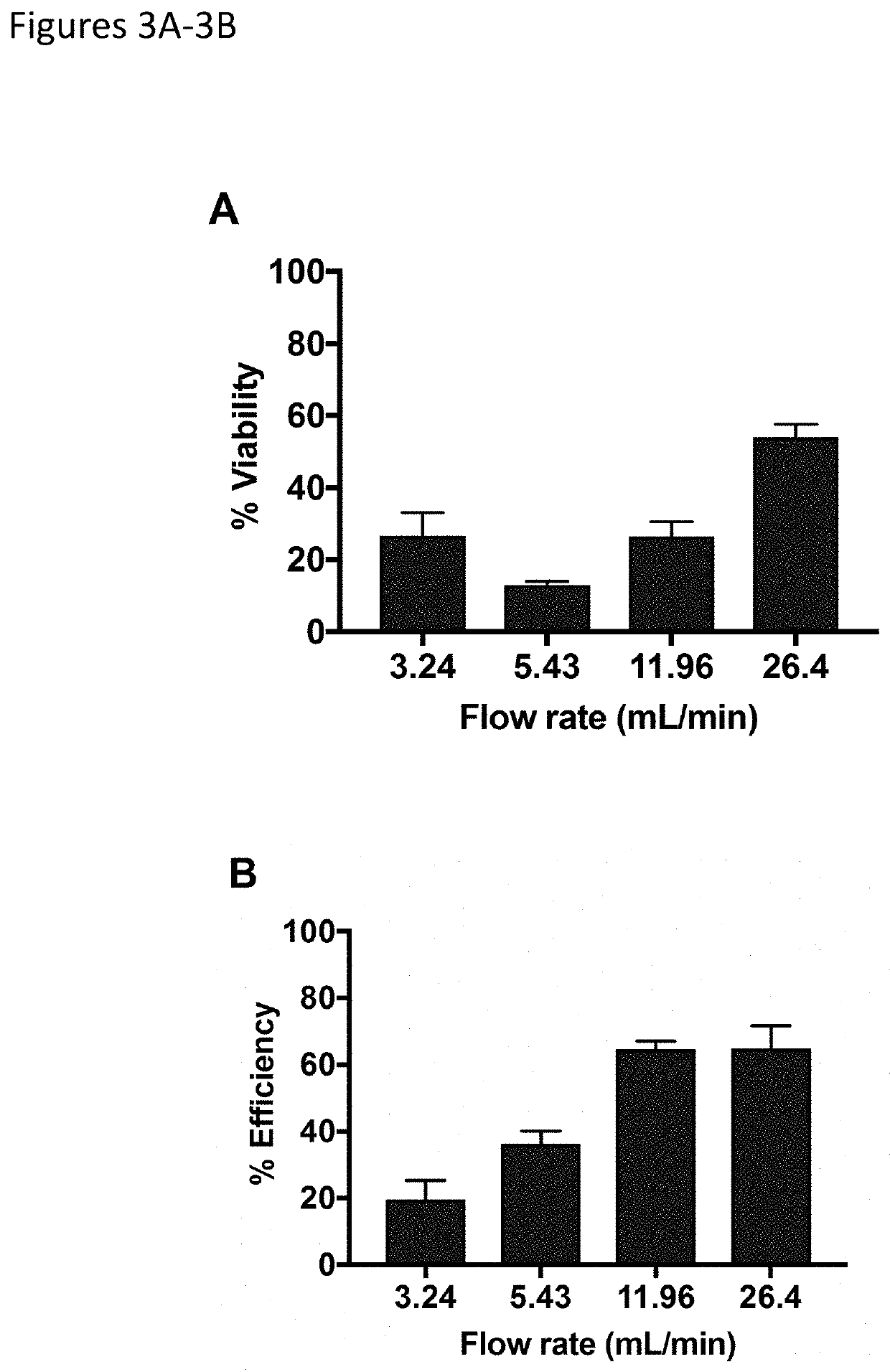Devices, systems, and kits for electroporation and methods of use thereof
- Summary
- Abstract
- Description
- Claims
- Application Information
AI Technical Summary
Benefits of technology
Problems solved by technology
Method used
Image
Examples
example 1
Devices and Systems
[0257]A continuous flow electroporation device and related system were designed and fabricated to allow for a plurality of devices to be used in parallel to enhance or maximize the number of cell electroporation events occurring in a fixed time window, thereby enhancing or maximizing throughput of cell engineering and / or accelerating biological discovery. The electroporation device is configured to be compatible with current automated fluid handling systems, e.g., pipette tip-based dispensers, robotic fluid pumps, etc.
[0258]FIG. 1A shows a schematic of an exemplary embodiment of an electroporation device shown, in this configuration, as a pipette tip. FIG. 1A shows a close-up view of an active area of the device, including an electroporation zone. This device provides for continuous flow genetic manipulation of both eukaryotic and prokaryotic cells in a platform that can be easily automated through integration with liquid handling robots. In the device of FIGS. 1A...
example 2
Initial Development of Experimental Parameters for Optimal Transfection
[0262]Experiments have been conducted to study the physical and biological parameters influencing electroporation of the Jurkat immortalized T cell line using devices of the current invention. Using industry standard flow cytometry methods, both cell viability (measured by 7AAD dye exclusion) and transfection efficiency (measured by GFP expression) of engineered Jurkat cells were assessed using our devices, both of which are common measures of electroporation success in the field of gene delivery. Unless specified otherwise, experimental results shown below were generated by electroporating a population of Jurkat cells at a concentration of 1×106 cells in 100 μL of buffer with 5 μg of plasmid (e.g., GFP expression plasmid). Electroporation experiments were performed at 100 Hz with square waveforms and a pulse duration of 9.5 ms. After 24-hour incubation, cells were stained with 7-AAD stain and analyzed via flow c...
example 3
Transfection Data Using Devices of the Invention
[0263]Devices of the invention show peak transfection performance when the flow rate is maximized through the electroporation channel (FIGS. 3A and 3B). The desired flow rate was achieved utilizing a controlled dispense rate pipette to increase both viability and efficiency, corresponding to a ˜6.5 ms residence time of the cell sample within the electric field. Peak cell viability of 54% was achieved, with transfection efficiency of 65%, demonstrating a significant advancement in the transfection of human immune cells with devices of the invention.
[0264]FIGS. 4A-4D illustrate flow rate simulation along an exemplary active zone of the device (i.e., from a first electrode lumen, through the electroporation zone, and into the second electrode lumen). In this embodiment, a medium contains flowing biological cells. From the simulated fluid flow at 10 mL / min and 100 mL / min, the average linear velocity of the samples going through the electro...
PUM
 Login to View More
Login to View More Abstract
Description
Claims
Application Information
 Login to View More
Login to View More - R&D
- Intellectual Property
- Life Sciences
- Materials
- Tech Scout
- Unparalleled Data Quality
- Higher Quality Content
- 60% Fewer Hallucinations
Browse by: Latest US Patents, China's latest patents, Technical Efficacy Thesaurus, Application Domain, Technology Topic, Popular Technical Reports.
© 2025 PatSnap. All rights reserved.Legal|Privacy policy|Modern Slavery Act Transparency Statement|Sitemap|About US| Contact US: help@patsnap.com



